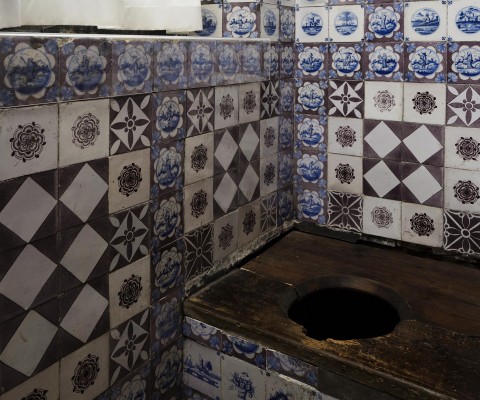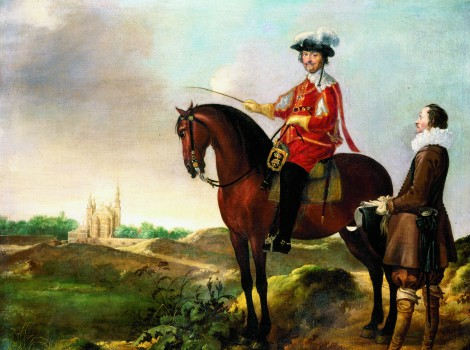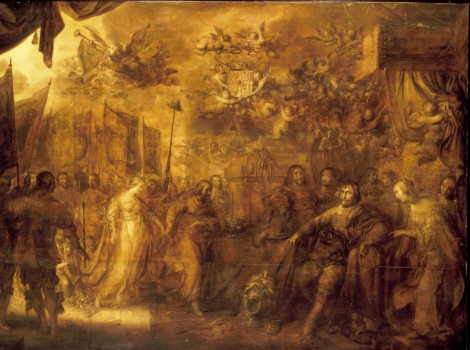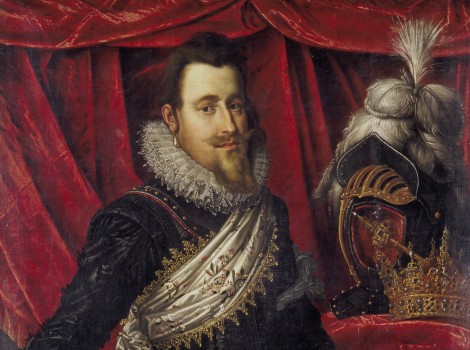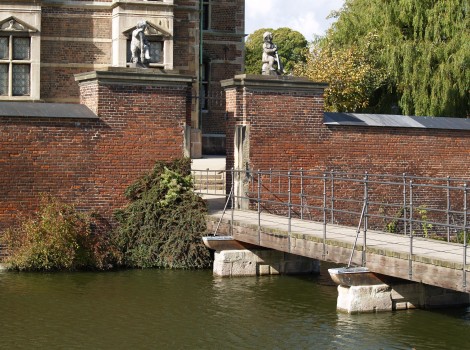3A Christian IV’s Toilet
This room, formerly known as “The Secret”, is the lowest of three toilets, each with its own disposal chute. Originally it had a door in the wall to the left leading to the bathroom (where the Garden Room is now situated).
There was a water cistern in the room used for flushing. The drain led to the moat which surrounds the Palace. During drier periods it was difficult to get water circulation into the moat, resulting in an unpleasant smell from below.
The stucco ceiling dates from the time of Christian IV and was probably made by Valentin Dresler. The blue and white tiles on the walls were put up in connection with Frederik IV’s refurbishing of Rosenborg in 1705. The original tiles were Dutch and were delivered in 1706; some of them are still on the walls. Later – in the 19th century – they were supplemented with tiles originally made in 1736 for the Hermitage Palace in a factory in Store Kongensgade.

 Dansk
Dansk
 English
English
 Deutsch
Deutsch

